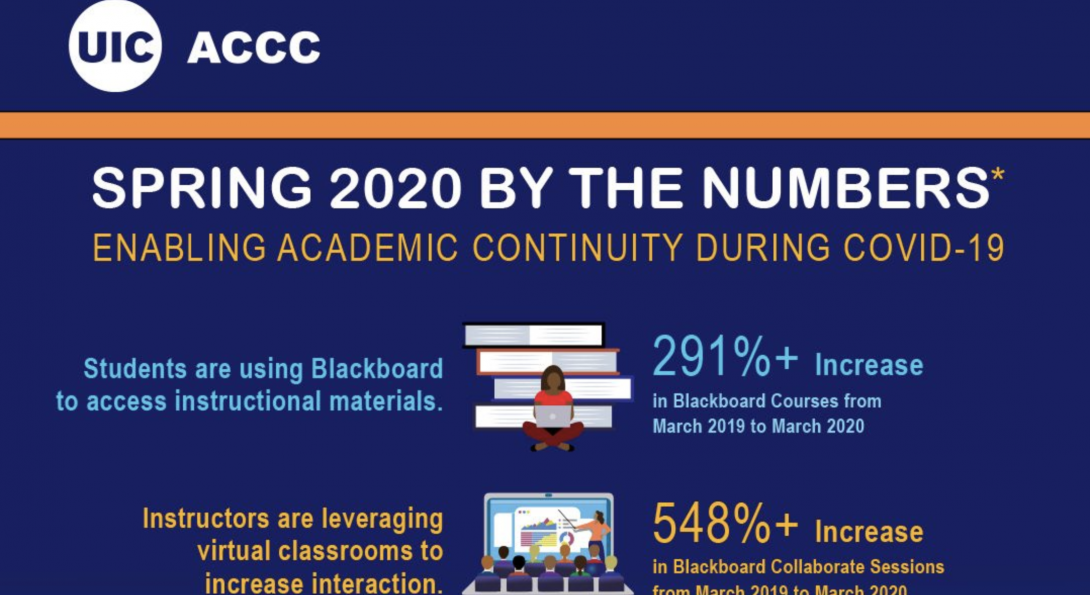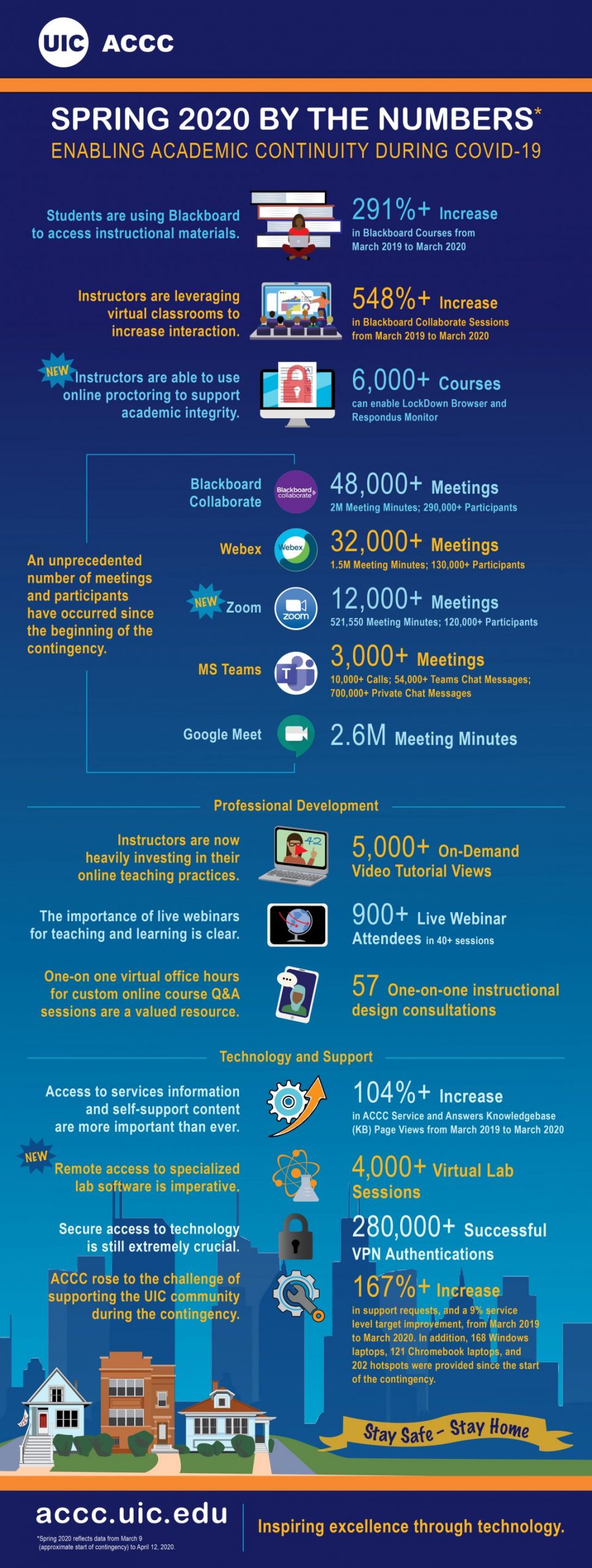Spring 2020 By the Numbers: Enabling Academic Continuity During COVID-19

Spring 2020 By the Numbers: Enabling Academic Continuity During COVID-19
*See complete infographic below
The way we teach and learn switched abruptly online in an effort to curb the effects of a novel pandemic. Remote instruction is not something new. In fact, remote learning has its roots in in the 17th century when Sir Isaac Pitman ran courses via correspondence in 1840.
Modern day computer-based learning is said to have been started in 1960 at the University of Illinois through a project called PLATO (Programmed Logic for Automatic Teaching Operations), which ran for a span of four decades and influenced several modern multi-user computing concepts such as forums, chat rooms and instant messaging, as well as online testing, remote screen sharing, blogging and multiplayer video games.
Today, Instructors and students are leveraging various services, tools and resources to streamline remote teaching and learning. The sudden switch to online learning has naturally caused a spike in related IT services, tools, and resources offered to the UIC community through Technology Solutions.
Our infographic on enabling academic continuity paints a picture of this surge in remote teaching and learning, and collaboration tools. For example, in Spring 2020, we saw a 291% increase in Blackboard courses in March 2020 compared with March 2019, and a 548% increase in Blackboard Collaborate sessions during the same time.
In addition, 4.9 million meeting minutes were recorded on Zoom, which Technology Solutions newly introduced to the UIC community, while Google Meet had 2.6 million minutes, Blackboard Collaborate had 2 million minutes, and Webex had 1.5 million minutes.
